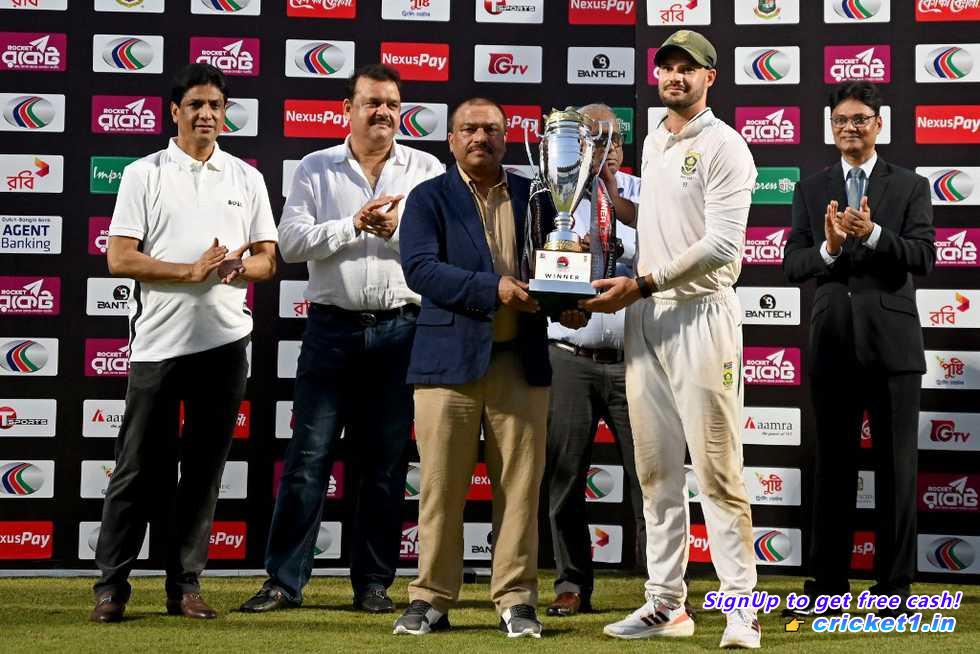
As the cricketing world continues to evolve, teams like South Africa are adapting to the challenges of competing in multiple formats across diverse geographical locations. Recently, South Africa announced their squad for a men’s T20I series against India, coinciding with their dominant performances in the Test series against Bangladesh in Chattogram. South Africa, ending the third day of the Test with six wickets to take and a commanding lead of 373 runs, ultimately clinched the series 2-0. This simultaneous scheduling illustrates how cricket has entered a brave new world, with teams managing the rigors of overlapping commitments in several time zones and vast distances.
With the final match of the South Africa-India T20I series set to take place at the Wanderers in Johannesburg on November 15, Indian teams will be active elsewhere, with both their senior team and India A reaching the end of the first day of their three-day encounter in Perth. The distance between Johannesburg and Perth spans a whopping 8,310 kilometers across six time zones, showcasing the logistical challenges both players and management face in this modern era of cricket.
The 2023-25 World Test Championship (WTC) cycle has seen South Africa slated to play the least number of matches, tied with Bangladesh at 12, compared to England’s 22 and the 19 matches for Australia and India. However, in reality, South Africa’s cricket calendar hasn’t been as sparse, with the team participating in 30 games this year, almost matching England and Australia’s 31, while India tops them at 35.
To manage an ever-busier schedule with a relatively smaller pool of players, South Africa has introduced “conditioning blocks” for their fast bowlers. These blocks, lasting up to 12 weeks, allow recovery and preparation in a way that prevents burnout. This strategic approach has seen top players like Gerald Coetzee and Marco Jansen emerge in the domestic T20 competitions after significant absence. Meanwhile, Lungi Ngidi is set to take a similar break, and Kagiso Rabada, their foremost Test bowler, will not participate in the upcoming India series.
The goal, as explained by Rob Walter, South Africa’s coach, is to expand the talent pool to the point where they can field two competitive teams simultaneously. He stated, “The ultimate aim is to have 25-plus players who are adept at top-level cricket, enabling us to strategically handle schedules without compromising on performance.” He acknowledged the encroachment of different formats on each other’s schedules and stressed the need for robust management to maintain player welfare.
Kagiso Rabada exemplifies the balancing act required, as his prowess is sought in Tests, ODIs, T20Is, and lucrative franchise leagues.
. Walter coordinates closely with Shukri Conrad, the red-ball coach, to ensure Rabada remains fresh, contributing to South Africa’s goals. This strategy paid off with Rabada delivering stellar performances in Bangladesh, securing 14 wickets at an impressive average of 9.00.
Despite notable absences from the T20I squad, including Quinton de Kock, Anrich Nortje, and Tabraiz Shamsi, the rationale varies. While de Kock has been distanced from the national team since the T20 World Cup final, Walter allows him the space to decide his return. Both Nortje and Shamsi have chosen to focus on global T20 leagues over national contracts, highlighting the broader career opportunities for players in today’s cricket environment.
The scheduling demands are not unique to South Africa. England faces similar challenges, transitioning swiftly between tours, such as their recent shift from a white-ball series against Australia, to Tests in Pakistan, followed by a West Indies tour, and shortly thereafter, a series in New Zealand. Players like Sam Curran underscore the importance of sensible scheduling, acknowledging the benefits of introducing younger players to handle overlapping commitments.
In this interconnected world, even press conferences reflect the global nature of modern cricket. Coach Walter communicated with the South African media from Napier, New Zealand, at midnight their time, while his media coordinator managed proceedings from Chattogram. This kind of remote engagement has become routine, with geographical barriers dissolving through technology.
As South Africa transitions from Test triumphs in Bangladesh to facing India in the T20 arena, their players will adapt quickly, traveling and acclimatizing in short order. Aiden Markram, who leads the team following his success as interim captain, reflects on past achievements and looks to the future with optimism. This cricketing journey promises no easy path, emphasizing perseverance and preparation as the team seeks further glory.

